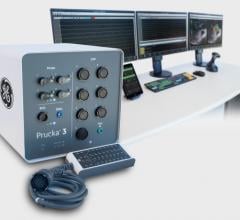
October 28, 2015 — Stereotaxis Inc. announced the worldwide launch of Respiratory Compensation, a new software feature of the company’s Niobe remote magnetic navigation system.
Respiratory Compensation is designed to further enhance the quality and accuracy of Ablation History and the automation features of the Niobe system by compensating for respiratory motion during an ablation procedure.
“With the stable focal contact Niobe provides, the latest iteration of Ablation History and Respiratory Compensation creates a more precise representation of where lesion sets are actually being created. I am confident this further improves my ability to create contiguous lesions,” said Peter Weiss, M.D. of Intermountain Medical Center in Salt Lake City, an early adopter of the software upgrade.
Respiratory motion of the heart during cardiac ablation procedures can affect the quality and accuracy of catheter localization within mapping technologies and the automation capabilities of the Niobe system. Respiratory Compensation corrects this distortion by automatically monitoring the movements of a reference catheter over the respiratory cycle and applying an algorithm, involving both the ablation and reference catheters, to filter out respiratory motion. Calculating the correct position of the ablation catheter over the respiratory cycle provides the physician with clearer ablation information and improves the automatic movement of the ablation catheter to targeted positions.
In 2014, the company introduced the Ablation History software feature to the Niobe system, which provides a real-time, visual display of the catheter’s power output and duration, giving the physician greater visibility of potential lesion gaps, one of the common failure points to achieving favorable ablation outcomes.
For more information: www.stereotaxis.com


 April 29, 2025
April 29, 2025 









